Harley Davidson Softail Deluxe 2011 Owner's manual
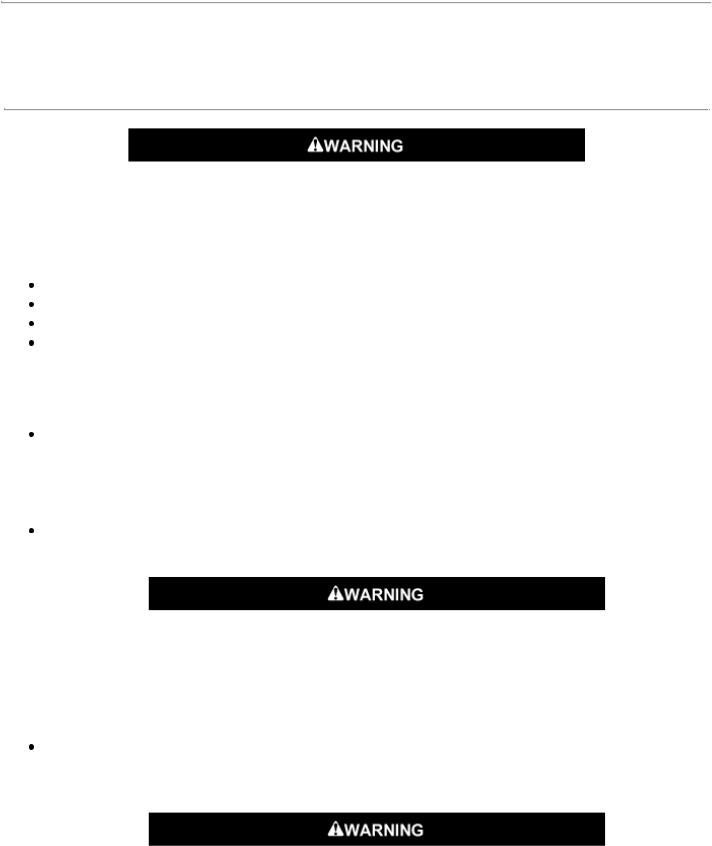
2011 Softail Deluxe Owner's Manual
Safety First
Safe Operating Rules
Motorcycles are different from other vehicles. They operate, steer, handle and brake differently. Unskilled or improper use could result in loss of control, death or serious injury. (00556c)
Take a rider training course.
Read Owner's Manual before riding, adding accessories or servicing.
Wear a helmet, eye protection and protective clothing.
Never tow a trailer.
Before operating your new motorcycle it is your responsibility to read and follow the operating and maintenance instructions in this manual, and follow these basic rules for your personal safety.
Know and respect the rules of the road (see Rules of the Road). Carefully read and familiarize yourself with the motorcycle safety information that is provided by your country or state. In the United States, read the RIDING TIPS booklet that is provided with your Owner's Manual, and read through the MOTORCYCLE HANDBOOK which is made available by your state.
Before starting engine, check for proper operation of brake, clutch, shifter, throttle controls, correct fuel and oil supply.
HarleyDavidson parts and accessories are designed for HarleyDavidson motorcycles. Using nonHarleyDavidson parts or accessories can adversely affect performance, stability or handling, which could result in death or serious injury. (00001b)
Use only HarleyDavidson approved parts and accessories. Use of certain other manufacturer's performance parts will void your new motorcycle warranty. See your Harley Davidson dealer for details.
Stop the engine when refueling or servicing the fuel system. Do not smoke or allow open flame or sparks near gasoline. Gasoline is extremely flammable and highly explosive, which could result in death or serious injury. (00002a)
When refueling your motorcycle, the following rules should be observed.

Refuel in a well ventilated area with the engine turned off. Remove fuel filler cap slowly.
Do not smoke or allow open flames or sparks when refueling or servicing the fuel system. Do not fill fuel tank above the bottom of the filler neck insert.
Leave air space to allow for fuel expansion.
Do not store motorcycle with gasoline in tank within the home or garage where open flames, pilot lights, sparks or electric motors are present. Gasoline is extremely flammable and highly explosive, which could result in death or serious injury. (00003a)
Engine exhaust from this product contains chemicals known to the State of California to cause cancer, and birth defects or other reproductive harm. (00004f)
Do not run motorcycle in a closed garage or confined area. Inhaling motorcycle exhaust, which contains poisonous carbon monoxide gas, could result in death or serious injury. (00005a)
The jiffy stand locks when placed in the full forward (down) position with vehicle weight on it. If the jiffy stand is not in the full forward (down) position with vehicle weight on it, the vehicle can fall over which could result in death or serious injury. (00006a)
Be sure jiffy stand is fully retracted before riding. If jiffy stand is not fully retracted, it can contact the road surface causing a loss of vehicle control, which could result in death or serious injury. (00007a)
A new motorcycle must be operated according to the special breakin procedure. See
Breakin Riding Rules.
Operate motorcycle only at moderate speed and out of traffic until you have become thoroughly familiar with its operation and handling characteristics under all conditions.
NOTE:
We recommend that you obtain information and formal training in the correct motorcycle riding technique. In the United States, the Motorcycle Safety Foundation® offers beginning and

advanced rider safety courses. Call 8004469227 for information.
Travel at speeds appropriate for road and conditions and never travel faster than posted speed limit. Excessive speed can cause loss of vehicle control, which could result in death or serious injury. (00008a)
Do not exceed the legal speed limit or drive too fast for existing conditions. Always reduce speed when poor driving conditions exist. High speed increases the influence of any other condition affecting stability and increases the possibility of loss of control.
Pay strict attention to road surfaces and wind conditions. Any two wheeled vehicle may be subject to upsetting forces such as wind blasts from passing trucks, holes in the pavement, rough road surfaces, rider control error, etc. These forces may influence the handling characteristics of your motorcycle. If this happens, reduce speed and guide the motorcycle with a relaxed grip to a controlled condition. Do not brake abruptly or force the handlebar. This may aggravate an unstable condition.
Keep cargo weight concentrated close to the motorcycle and as low as possible to minimize the change in the motorcycle's center of gravity. Distribute weight evenly on both sides of the vehicle and do not load bulky items too far behind the rider or add weight to the handlebars or front forks. Do not exceed maximum specified load in each saddlebag.
NOTE:
New riders should gain experience under various conditions while driving at moderate speeds.
Operate your motorcycle defensively. Remember, a motorcycle does not afford the same protection as an automobile in an accident. One of the most common accident situations occurs when the driver of the other vehicle fails to see or recognize a motorcycle and turns left into the oncoming motorcyclist. Operate only with headlamp on.
Wear an approved helmet, clothing, and foot gear suited for motorcycle riding. Bright or light colors are best for greater visibility in traffic, especially at night. Avoid loose, flowing garments and scarves.
Avoid contact with exhaust system and wear protective clothing that completely covers legs while riding. Exhaust pipes and mufflers get very hot when engine is running and remain too hot to touch, even after engine is turned off. Failure to wear protective clothing could result in burns or other serious injury. (00009a)
When carrying passengers, it is your responsibility to instruct them on proper riding procedures. (See the RIDING TIPS booklet included in your HarleyDavidson Owner's Kit.)
Do not allow other individuals, under any circumstances, to operate your motorcycle unless you know they are experienced, licensed riders and are thoroughly familiar with the operation of your particular motorcycle.
Protect your motorcycle against theft. After parking your motorcycle, lock the steering head and remove the key from the motorcycle. Set security alarm if present.
Safe motorcycle operation requires alert mental judgment combined with a defensive driving

attitude. Do not allow fatigue, alcohol or drugs to endanger your safety or that of others. Vehicles equipped with a sound system should have the volume adjusted to a non distracting level before operating vehicle.
Maintain your motorcycle in proper operating condition in accordance with Regular Service Intervals: 2011 Softail Models. Particularly important to motorcycle stability is proper tire inflation pressure, tread condition, and proper adjustment of wheel bearings and steering head bearings.
Do not operate vehicle with forks locked. Locking the forks restricts the vehicle's turning ability, which could result in death or serious injury. (00035a)
Perform the service and maintenance operations as indicated in the regular service interval table. Lack of regular maintenance at the recommended intervals can affect the safe operation of your motorcycle, which could result in death or serious injury. (00010a)
Do not operate motorcycle with loose, worn or damaged steering or suspension systems. Contact a Harley Davidson dealer for repairs. Loose, worn or damaged steering or suspension components can adversely affect stability and handling, which could result in death or serious injury. (00011a)
Regularly inspect shock absorbers and front forks. Replace leaking, damaged or worn parts that can adversely affect stability and handling, which could result in death or serious injury. (00012a)
Use HarleyDavidson replacement fasteners. Aftermarket fasteners can adversely affect performance, which could result in death or serious injury. (00013a)
See your HarleyDavidson service manual for proper torque values.
Aftermarket fasteners may not have the specific property requirements to perform properly.
Be sure tires are properly inflated, balanced and have
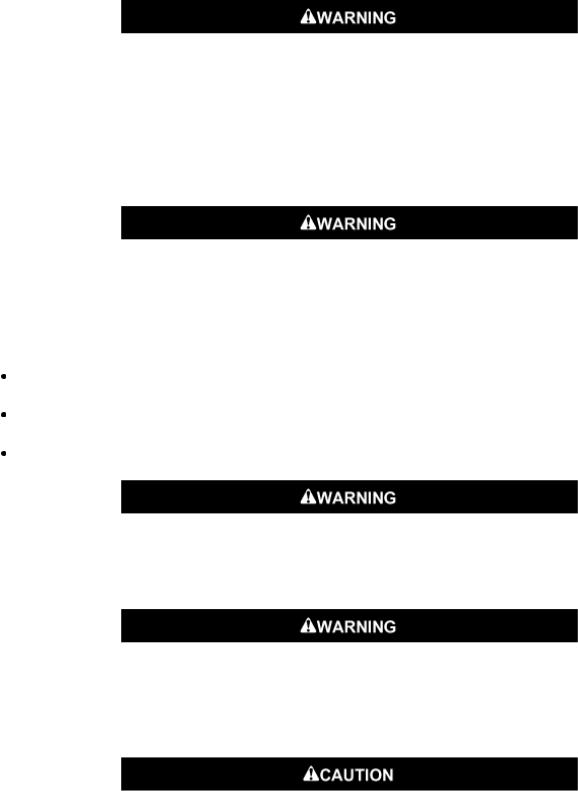
adequate tread. Inspect your tires regularly and see a HarleyDavidson dealer for replacements. Riding with excessively worn, unbalanced or underinflated tires can adversely affect stability and handling, which could result in death or serious injury. (00014a)
Replace punctured or damaged tires. In some cases, small punctures in the tread area may be repaired from within the demounted tire by a HarleyDavidson dealer. Speed should NOT exceed 50 mph (80 km/h) for the first 24 hours after repair, and the repaired tire should NEVER be used over 80 mph (130 km/h). Failure to follow this warning could result in death or serious injury. (00015a)
Do not exceed the motorcycle's Gross Vehicle Weight Rating (GVWR) or Gross Axle Weight Rating (GAWR). Exceeding these weight ratings can affect stability and handling, which could result in death or serious injury. (00016e)
GVWR is the sum of the weight of the motorcycle, accessories, and the maximum weight of the rider, passenger and cargo that can be safely carried.
The GVWR is shown on the information plate, located on the frame steering head or the frame downtube.
GAWR is the maximum amount of weight that can be safely carried on each axle.
Do not tow a disabled motorcycle. Towing can adversely affect stability and handling, which could result in death or serious injury. (00017a)
Do not pull a trailer with a motorcycle. Pulling a trailer can cause tire overload, reduced braking efficiency and adversely affect stability and handling, which could result in death or serious injury. (00018b)
Direct contact of D.O.T. 4 brake fluid with eyes can cause irritation. Avoid eye contact. In case of eye contact flush with large amounts of water and get medical attention.
Swallowing large amounts of D.O.T. 4 brake fluid can cause digestive discomfort. If swallowed, obtain medical attention. Use in well ventilated area. KEEP OUT OF

REACH OF CHILDREN. (00240a)
Batteries, battery posts, terminals and related accessories contain lead and lead compounds, and other chemicals known to the State of California to cause cancer, and birth defects or other reproductive harm. Wash hands after handling. (00019e)
Do not open storage compartments while riding. Distractions while riding can lead to loss of control, which could result in death or serious injury. (00082a)
Consult a HarleyDavidson dealer regarding any questions or problems that occur in the operation of your motorcycle. Failure to do so can aggravate an initial problem, cause costly repairs, cause an accident and could result in death or serious injury. (00020a)
Be sure all equipment required by federal, state and local law is installed and in good operating condition.
Additional Safe Operating Rules
If ABS lamp remains on continuously, the ABS is not operating. The standard brake system is operational, but wheel lock up can occur. Contact a HarleyDavidson Dealer to have ABS repaired. A locked wheel will skid and can cause loss of vehicle control, which could result in death or serious injury. (00361a)
ABS cannot prevent lockup of rear wheel due to engine braking. ABS will not aid in cornering or on loose/uneven surfaces. A locked wheel will skid and can cause loss of vehicle control, which could result in death or serious injury. (00362a)
See Brake System to properly operate motorcycles equipped with an Antilock Brake System (ABS).
Rules of the Road
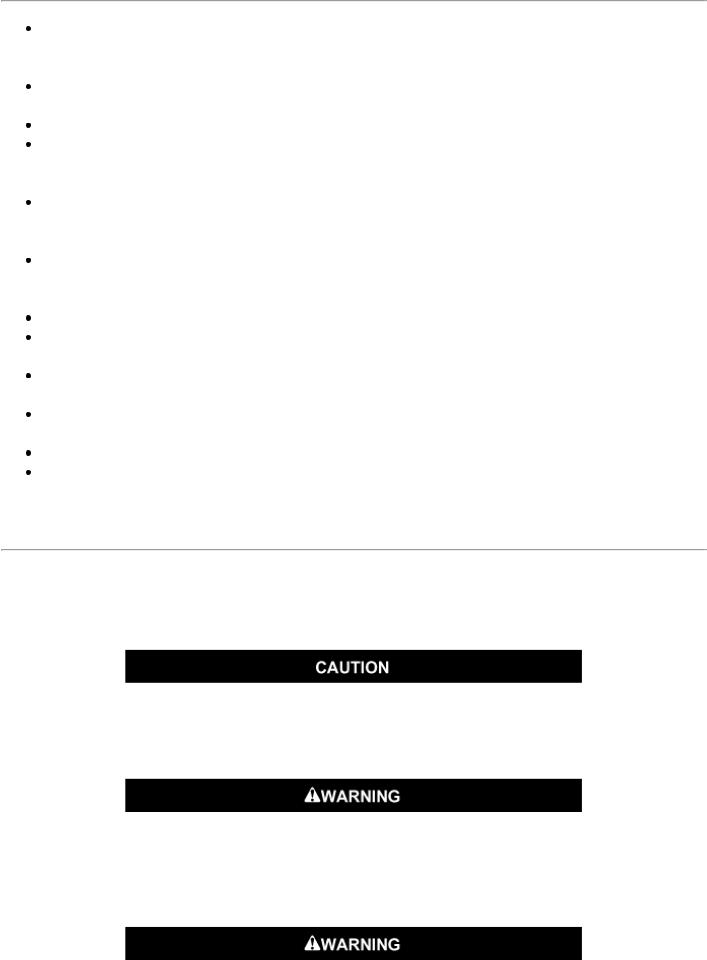
Always sound your horn, actuate your turn signals, and exercise caution when passing other vehicles going in the same direction. Never try to pass another vehicle going in the same direction at street intersections, on curves, or when going up or down a hill.
At street intersections give the rightofway. Do not presume you have the rightofway, as the other driver may not know it is your turn.
Always signal when preparing to stop, turn or pass.
All traffic signs, including those used for the control of traffic at intersections, should be obeyed promptly. SLOW DOWN signs near schools and CAUTION signs at railroad crossings should always be observed and your actions governed accordingly.
When intending to turn, signal at least 100 ft 30.5 m before reaching the turning point. If turning across an intersection, move over to the centerline of the street (unless local rules require otherwise). Slow down when entering the intersection and turn carefully.
Never anticipate a traffic light. When a change is indicated from GO to STOP (or STOP to GO) in the traffic control systems at intersections, slow down and wait for the light to change. Never run through a yellow or red traffic light.
While turning either right or left, watch for pedestrians, animals, as well as vehicles.
Do not leave the curb or parking area without signaling. Be sure your way is clear to enter moving traffic. A moving line of traffic always has the rightofway.
Be sure your license plate is installed in the position specified by law and is clearly visible at all times. Keep the plate clean.
Ride at a safe speed that is consistent with the type of highway you are on. Pay strict attention to whether the road is dry, oily, icy or wet.
Watch for debris such as leaves or loose gravel.
Weather and traffic conditions on the highway dictate adjusting your speed and driving habits accordingly.
Accessories and Cargo
HarleyDavidson Motor Company cannot test and make specific recommendations concerning every accessory or combination of accessories sold. Therefore, the rider must be responsible for safe operation of the motorcycle when installing accessories or carrying additional weight.
Rocker models have a rear forkmounted fender. The fender will not support a passenger or fendermounted luggage rack. Damage to the fender could occur. (00557g)
See the Accessory and Cargo section in your Owner's Manual. Improper loading of cargo or installation of accessories can affect motorcycle stability and handling, which could result in death or serious injury. (00021a)
Do not exceed the motorcycle's Gross Vehicle Weight
Rating (GVWR) or Gross Axle Weight Rating (GAWR).
Exceeding these weight ratings can affect stability and

handling, which could result in death or serious injury. (00016e)
Do not pull a trailer with a motorcycle. Pulling a trailer can cause tire overload, reduced braking efficiency and adversely affect stability and handling, which could result in death or serious injury. (00018b)
GVWR is the sum of the weight of the motorcycle, accessories, and the maximum weight of the rider, passenger and cargo that can be safely carried.
GAWR is the maximum amount of weight that can be safely carried on each axle.
The GVWR and GAWR are shown on the information plate which is located on the frame down tube.
Accessory and Cargo Guidelines
The following guidelines should be used when equipping a motorcycle, carrying passengers and/or cargo.
Travel at speeds appropriate for road and conditions and never travel faster than posted speed limit. Excessive speed can cause loss of vehicle control, which could result in death or serious injury. (00008a)
Do not exceed the legal speed limit or drive too fast for existing conditions. Always reduce speed when poor driving conditions exist. High speed increases the influence of any other condition affecting stability and increases the possibility of loss of control.
Pay strict attention to road surfaces and wind conditions. Any two wheeled vehicle may be subject to upsetting forces such as wind blasts from passing trucks, holes in the pavement, rough road surfaces, rider control error, etc. These forces may influence the handling characteristics of your motorcycle. If this happens, reduce speed and guide the motorcycle with a relaxed grip to a controlled condition. Do not brake abruptly or force the handlebar. This may aggravate an unstable condition.
Keep cargo weight concentrated close to the motorcycle and as low as possible. This minimizes the change in the motorcycle's center of gravity.
Distribute weight evenly on both sides of the vehicle.
Do not load bulky items too far behind the rider or add weight to the handlebars or front forks.
Do not exceed maximum specified load in each saddlebag.
Luggage racks are designed for lightweight items. Do not overload racks.
Be sure cargo is secure and will not shift while riding and recheck the cargo periodically. Accessories that change the operator's riding position may increase reaction time and affect handling of the motorcycle.
Additional electrical equipment may overload the motorcycle's electrical system possibly resulting in electrical system and/or component failure.

The front and/or rear guard(s) can provide limited leg and cosmetic vehicle protection under unique circumstances. (Fall over while stopped, very slow speed slide.) It is not made or intended to provide protection from bodily injury in a collision with another vehicle or any other object.
(00022a)
Large surfaces such as fairings, windshields, backrests, and luggage racks can adversely affect handling. Only genuine HarleyDavidson items designed specifically for the motorcycle model should be used with proper installation.
HarleyDavidson parts and accessories are designed for HarleyDavidson motorcycles. Using nonHarleyDavidson parts or accessories can adversely affect performance, stability or handling, which could result in death or serious injury. (00001b)
Only Touring HarleyDavidson Motorcycles are suitable for sidecar use. Consult a HarleyDavidson dealer. Use of motorcycles other than Touring models with sidecars could result in death or serious injury. (00040a)
Noise Control System
Tampering
Owners are warned that removal or replacement of any noise control system component may be prohibited by law. This prohibition applies prior to vehicle sale or delivery to the ultimate purchaser. Use of a vehicle on which noise control system components have been removed or rendered inoperative may also be prohibited by law.
Identification
Vehicle Identification Number (VIN)
General
See Typical HarleyDavidson VIN: 2011 Softail Models. A unique 17digit serial or Vehicle Identification Number (VIN) is assigned to each motorcycle. Refer to HarleyDavidson VIN Breakdown: 2011 Softail Models.
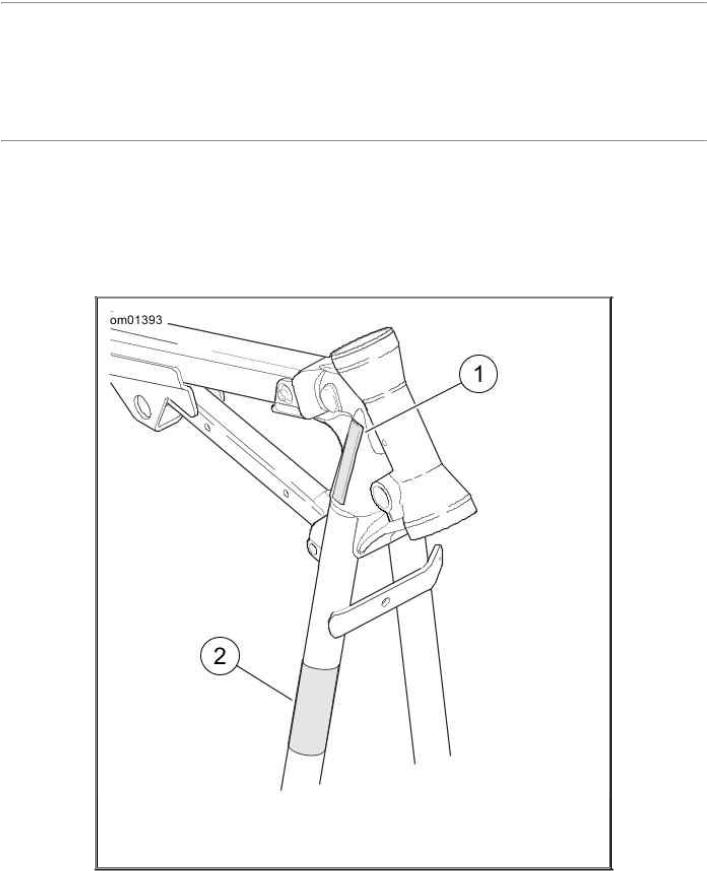
Location
See VIN Locations. The full 17digit VIN is stamped on the right side of the frame near the steering head. In some destinations, a printed VIN label is also attached to the right front downtube.
Abbreviated VIN
An abbreviated VIN showing the vehicle model, engine type, model year, and sequential number is stamped on the left side of the crankcase between the engine cylinders.
NOTE:
Always give the full 17digit Vehicle Identification Number when ordering parts or making any inquiry about your motorcycle.
1.Stamped VIN
2.VIN label
VIN Locations
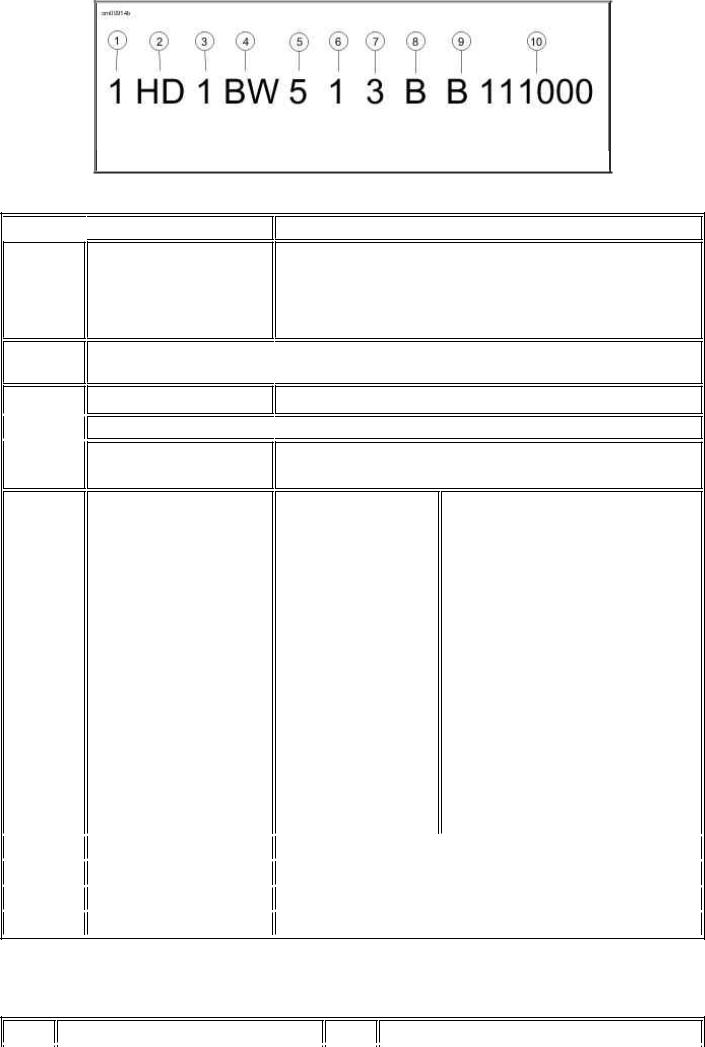
Typical HarleyDavidson VIN: 2011 Softail Models
HarleyDavidson VIN Breakdown: 2011 Softail Models
 POSITION
POSITION DESCRIPTION
DESCRIPTION
1Market designation
2Manufacturer/vehicle type
3 |
Motorcycle type |
|
Model |
|
|
4 |
|
|
|
5Engine type
POSSIBLE VALUES
1=Originally manufactured for sale within the United States
5=Originally manufactured for sale outside of the United States
 HD=HarleyDavidson motorcycle
HD=HarleyDavidson motorcycle
1=Heavyweight motorcycle (901 cm3 and larger)
 See VIN model table
See VIN model table
5=Twin Cam 96B™, 1584 cm3 aircooled, fuel injected,balanced
6 |
|
Introduction |
|
Normal Introduction |
|
Midyear or Special Introduction |
|
|
date/calibration |
|
1=Domestic |
|
2, 4=Domestic |
|
|
|
|
|
||
|
|
|
|
3=California |
|
5, 6=California |
|
|
|
|
A=Canada |
|
B=Canada |
|
|
|
|
C=HDI |
|
D=HDI |
|
|
|
|
E=Japan |
|
F=Japan |
|
|
|
|
G=Australia |
|
H=Australia |
|
|
|
|
J=Brazil |
|
K=Brazil |
|
|
|
|
L=Asia Pacific |
|
M=Asia Pacific |
|
|
|
|
N=India |
|
P=India |
|
|
|
|
|
|
|
7 |
|
VIN check digit |
|
Can be 09 or X |
|
|
|
|
|
|
|
|
|
8 |
|
Model year |
|
B=2011 |
|
|
|
|
|
|
|
|
|
9 |
|
Assembly plant |
|
B=York, PA U.S.A. |
|
|
|
|
|
|
|
|
|
10 |
|
Sequential number |
|
Varies |
|
|
VIN Model Codes: 2011 Softail Models
CODE |
MODEL |
|
CODE |
MODEL |
||
|
|
|
|
|
|
|
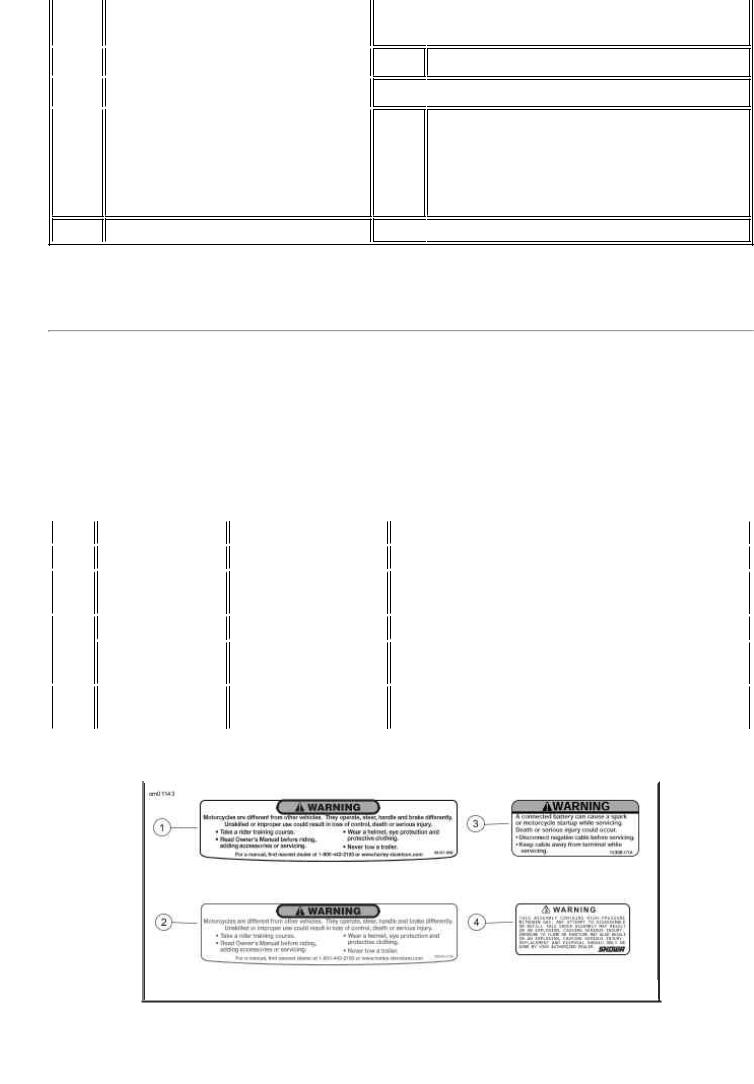
BV |
|
FXST Softail® Standard (HDI, JPN, |
JH |
|
|
AUS markets) |
|
|
|
|
JK |
BW |
|
FLSTC Heritage Softail® Classic |
|
|
|
|
JM |
BX |
|
FLSTF Fat Boy® |
|
|
|
|
JN |
JD |
|
FLSTN Softail® Deluxe |
JG |
|
FLSTF Shrine |
JP |
 FLSTC Shrine
FLSTC Shrine
FXCWC Softail Rocker™ C
 FLSTSB Softail™ Cross Bones™
FLSTSB Softail™ Cross Bones™
FLSTFB Softail® Fat Boy® Lo (CAL, CAN, DOM, JPN markets)
FLSTFB Softail® Fat Boy® Special (HDI, HDE markets)
 FXS Blackline™
FXS Blackline™
Labels
See Labels: Softail Models for safety and maintenance labels which were on the vehicle when new. If removed, replacement labels may be purchased for your motorcycle. Refer to Labels.
NOTE:
Some labels may be available in different languages for destinations outside the United States. See a HarleyDavidson dealer for all labels available for purchase.
|
|
|
|
|
|
|
|
Labels |
|||||
|
|
|
|
|
|
|
|
|
|
|
|
|
|
|
ITEM |
|
PART NO. |
|
DESCRIPTION |
|
|
LOCATION |
|
||||
|
|
|
|
|
|
|
|
|
|
|
|
||
|
1 |
|
2912795B |
|
General warnings |
|
|
Top of chrome air cleaner cover |
|
||||
|
|
|
|
|
|
|
|
|
|
|
|
||
|
2 |
|
2940401A |
|
General warnings |
|
|
Top of black air cleaner cover (FLSTFB/FLSTSB |
|
||||
|
|
|
|
|
|
|
|
|
|
only) |
|
||
|
|
|
|
|
|
|
|
|
|
|
|
||
|
3 |
|
1536801A |
|
Battery warning |
|
|
On frame, left of battery |
|
||||
|
|
|
|
|
|
|
|
|
|
|
|
||
|
|
|
1426304 |
|
Battery warning |
|
|
Side of battery |
|
||||
|
|
|
|
|
|
|
(Brazil) |
|
|
|
|
|
|
|
|
|
|
|
|
|
|
|
|||||
|
4 |
|
Not sold |
|
Shock absorber label |
|
On shock absorbers |
|
|||||
|
|
|
separately |
|
|
|
|
|
|
|
|
||
|
|
|
|
|
|
|
|
|
|
|
|
|
|
|
|
|
|
|
|
|
|
|
|
|
|
|
|
|
|
|
|
|
|
|
|
|
|
|
|
|
|
Labels: Softail Models

Specifications
Specifications
|
|
Engine |
|
|
|
||
|
|
|
|
|
|
|
|
|
ITEM |
|
|
SPECIFICATION |
|
||
|
|
|
|
|
|
||
|
Number of cylinders |
|
|
2 |
|
|
|
|
|
|
|
|
|
||
|
Type |
|
|
4cycle, 45 degree |
|
||
|
|
|
|
VType, air cooled |
|
||
|
|
|
|
|
|
||
|
Compression ratio |
|
|
9.21 |
|
|
|
|
|
|
|
|
|
|
|
|
Bore |
|
|
3.750 in |
|
95.25 mm |
|
|
|
|
|
|
|
|
|
|
Stroke |
|
|
4.380 in |
|
111.25 mm |
|
|
|
|
|
|
|
|
|
|
Displacement |
|
|
96.0 in3 |
|
1585 cm3 |
|
|
|
|
|
|
|
|
|
|
|
|
Electrical |
|
|
|
|
|
|
|
|
|
|
|
COMPONENT |
|
SPECIFICATION |
|
||
|
|
|
|
|
|
|
|
Ignition timing |
|
Not adjustable |
|
|
|
|
|
|
|
|
|
|
|
Battery |
|
12 V, 19 Ah, |
|
|
|
|
|
|
sealed and maintenancefree |
|
||
|
|
|
|
|
||
|
Charging system |
|
Threephase, 38 A system |
|
||
|
|
|
(439W @ 13V, 2000 rpm, |
|||
|
|
|
489W max power @ 13V) |
|||
|
|
|
|
|
|
|
|
Spark plug type |
|
6R12 |
|
|
|
|
|
|
|
|
|
|
|
Spark plug size |
|
12 mm |
|
|
|
|
|
|
|
|
|
|
|
Spark plug gap |
|
0.0380.043 in |
|
0.971.09 mm |
|
|
|
|
|
|
|
|
|
Spark plug torque |
|
1218 ftlb |
|
16.324.4 Nm |
|
|
|
|
|
|
|
|
NOTE:
Specifications in this publication may not match those of official certification in some markets due to timing of publication printing, variance in testing methods, and/or vehicle differences. Customers seeking officially recognized regulatory specifications for their vehicle should refer to certification documents and/or contact their respective dealer or distributor.
|
|
Transmission |
||
|
|
|
|
|
|
TRANSMISSION |
|
SPECIFICATION |
|
|
|
|
|
|
|
Type |
|
Constant mesh, foot shift |
|
|
|
|
|
|
|
Speeds |
|
6 forward |
|
|
|
|
|
|
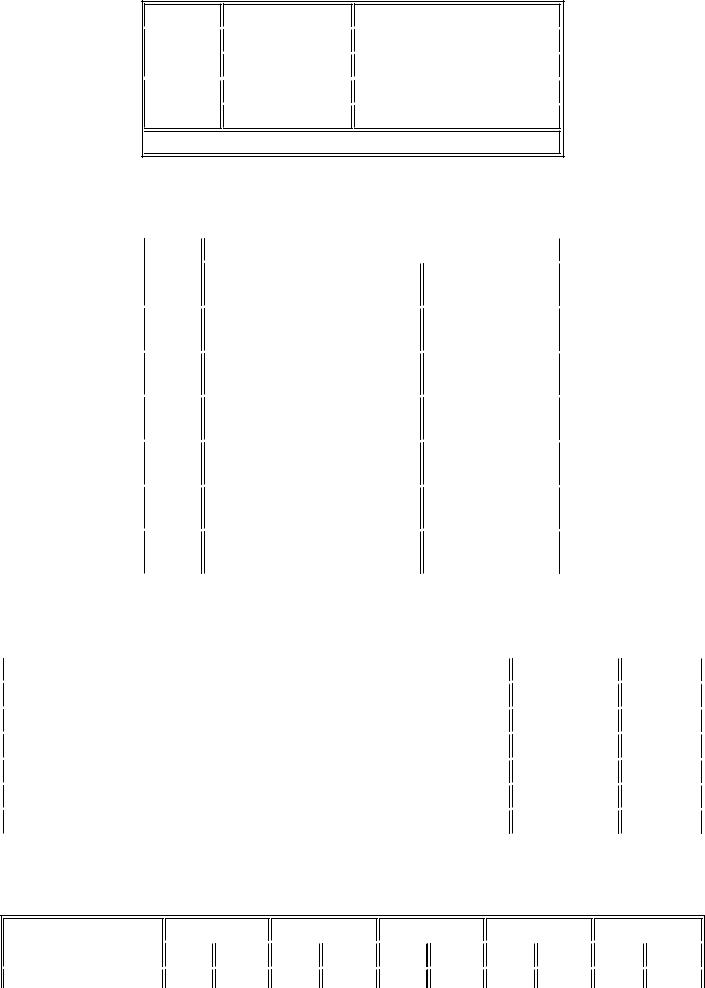
Sprocket Teeth
DRIVE |
|
ITEM |
|
NUMBER OF TEETH |
|
|
|
|
|
Primary |
|
Engine |
|
34 |
|
|
|
|
|
|
|
Clutch |
|
46 |
|
|
|
|
|
Final |
|
Transmission |
|
32 |
|
|
|
|
|
|
|
Rear wheel |
|
66* |
 *64 teeth on Japanese models
*64 teeth on Japanese models
Gear Ratios
|
|
|
|
|
|
|
|
GEAR |
|
RATIO |
|
|
|
|
|
|
|
|
|
|
|
|
|
DOMESTIC AND |
|
JAPANESE |
|
|
|
|
INTERNATIONAL |
|
MODELS |
|
|
|
|
|
|
||
|
1st |
|
9.311 |
|
9.029 |
|
|
Gear |
|
|
|
|
|
|
|
|
|
|
||
|
2nd |
|
6.454 |
|
6.259 |
|
|
Gear |
|
|
|
|
|
|
|
|
|
|
||
|
3rd |
|
4.793 |
|
4.648 |
|
|
Gear |
|
|
|
|
|
|
|
|
|
|
||
|
4th |
|
3.882 |
|
3.764 |
|
|
Gear |
|
|
|
|
|
|
|
|
|
|
||
|
5th |
|
3.307 |
|
3.207 |
|
|
Gear |
|
|
|
|
|
|
|
|
|
|
||
|
6th |
|
2.790 |
|
2.706 |
|
|
Gear |
|
|
|
|
|
|
|
|
|
|
|
|
Capacities
|
|
|
|
|
|
|
|
ITEM |
|
U.S. |
|
L |
|
|
|
|
|
|
|
|
|
Fuel tank (total): All Models but FXCWC |
|
5.00 gal |
|
18.93 |
|
|
|
|
|
|
|
|
|
Fuel tank (total): FXCWC |
|
4.90 gal |
|
18.54 |
|
|
|
|
|
|
|
|
|
Low fuel warning light on |
|
1.00 gal |
|
3.79 |
|
|
|
|
|
|
|
|
|
Oil tank with filter |
|
3.50 qt |
|
3.31 |
|
|
|
|
|
|
|
|
|
Transmission (approximate) |
|
1.00 qt |
|
0.95 |
|
|
|
|
|
|
|
|
|
Primary chaincase (approximate) |
|
1.00 qt |
|
0.95 |
|
|
|
|
|
|
|
|
Dimensions: FLSTFB, FLSTC, FLSTF, FLSTN and FLSTSB
ITEM |
|
FLSTFB |
|
FLSTC |
|
FLSTF |
|
FLSTN |
|
FLSTSB |
||||||||||
|
|
|
|
|
|
|
|
|
|
|
|
|
|
|
|
|
|
|
|
|
|
|
in |
|
mm |
|
in |
|
mm |
|
in |
|
mm |
|
in |
|
mm |
|
in |
|
mm |
|
|
|
|
|
|
|
|
|
|
|
|
|
|
|
|
|
|
|
|
|
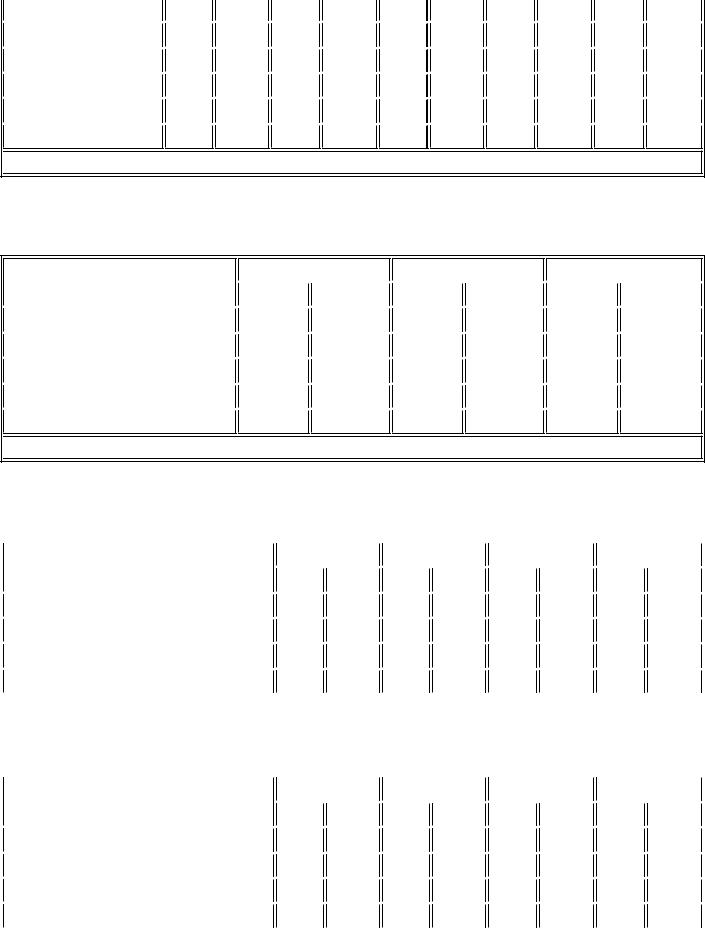
Wheel base |
|
64.5 |
|
1638 |
|
64.5 |
|
1638 |
|
64.5 |
|
1638 |
|
64.5 |
|
1638 |
|
64.5 |
|
1638 |
|
|
|
|
|
|
|
|
|
|
|
||||||||||
Overall length |
|
94.3 |
|
2395 |
|
94.5 |
|
2400 |
|
94.3 |
|
2395 |
|
94.7 |
|
2405 |
|
90.5 |
|
2299 |
|
|
|
|
|
|
|
|
|
|
|
||||||||||
Overall width |
|
39.2 |
|
996 |
|
37.6 |
|
955 |
|
39.2 |
|
996 |
|
38.6 |
|
980 |
|
38.1 |
|
968 |
|
|
|
|
|
|
|
|
|
|
|
||||||||||
Road clearance |
|
4.8 |
|
122 |
|
5.1 |
|
130 |
|
5.1 |
|
130 |
|
4.8 |
|
122 |
|
4.9 |
|
124 |
|
|
|
|
|
|
|
|
|
|
|
||||||||||
Overall height |
|
44.3 |
|
1125 |
|
55.2 |
|
1402 |
|
44.5 |
|
1130 |
|
44.3 |
|
1125 |
|
52.6 |
|
1337 |
|
|
|
|
|
|
|
|
|
|
|
||||||||||
Saddle height* |
|
24.3 |
|
616 |
|
25.5 |
|
648 |
|
25.4 |
|
645 |
|
24.5 |
|
622 |
|
26.6 |
|
676 |
 *With 180 lb 81.6 kg rider on seat
*With 180 lb 81.6 kg rider on seat
Dimensions: FXCWC, FXST and FXS
ITEM |
|
|
FXCWC |
|
|
FXST |
|
|
FXS |
||||||
|
|
|
|
|
|
|
|
|
|
|
|
|
|
|
|
|
|
in |
|
|
mm |
|
in |
|
|
mm |
|
in |
|
|
mm |
|
|
|
|
|
|
|
|||||||||
Wheel base |
|
69.2 |
|
|
1758 |
|
64.5 |
|
|
1638 |
|
66.5 |
|
|
1689 |
|
|
|
|
|
|
|
|||||||||
Overall length |
|
95.0 |
|
|
2413 |
|
94.5 |
|
|
2400 |
|
93.0 |
|
|
2362 |
|
|
|
|
|
|
|
|||||||||
Overall width |
|
35.1 |
|
|
892 |
|
36.2 |
|
|
919 |
|
34.0 |
|
|
864 |
|
|
|
|
|
|
|
|||||||||
Road clearance |
|
5.1 |
|
|
130 |
|
5.1 |
|
|
130 |
|
5.25 |
|
|
133 |
|
|
|
|
|
|
|
|||||||||
Saddle height* |
|
25.2 |
|
|
640 |
|
26.1 |
|
|
663 |
|
24.0 |
|
|
610 |
 *With 180 lb 81.6 kg rider on seat.
*With 180 lb 81.6 kg rider on seat.
Weights: FLSTC, FLSTF, FLSTN and FLSTSB
|
|
|
|
|
|
|
|
|
|
|
|
|
|
|
|
|
|
|
|
ITEM |
|
FLSTC |
|
FLSTF |
|
FLSTN |
|
FLSTSB |
|
||||||||
|
|
|
|
|
|
|
|
|
|
|
|
|
|
|
|
|
|
|
|
|
|
lb |
|
kg |
|
lb |
|
kg |
|
lb |
|
kg |
|
lb |
|
kg |
|
|
|
|
|
|
|
|
|
|
|
|
||||||||
|
Weight as shipped from factory |
|
730 |
|
331.1 |
|
694 |
|
314.8 |
|
695 |
|
315.3 |
|
700 |
|
317.5 |
|
|
|
|
|
|
|
|
|
|
|
|
||||||||
|
GVWR |
|
1160 |
|
526.2 |
|
1160 |
|
526.2 |
|
1160 |
|
526.2 |
|
1150 |
|
521.6 |
|
|
|
|
|
|
|
|
|
|
|
|
||||||||
|
GAWR front |
|
430 |
|
195.0 |
|
430 |
|
195.0 |
|
430 |
|
195.0 |
|
426 |
|
193.2 |
|
|
|
|
|
|
|
|
|
|
|
|
||||||||
|
GAWR rear |
|
730 |
|
331.1 |
|
730 |
|
331.1 |
|
730 |
|
331.1 |
|
724 |
|
328.4 |
|
|
|
|
|
|
|
|
|
|
|
|
|
|
|
|
|
|
|
|
Weights: FXCWC, FLSTFB, FXST and FXS
|
|
|
|
|
|
|
|
|
|
|
|
|
|
|
|
|
|
|
|
ITEM |
|
FXCWC |
|
FLSTFB |
|
FXST |
|
FXS |
|
||||||||
|
|
|
|
|
|
|
|
|
|
|
|
|
|
|
|
|
|
|
|
|
|
lb |
|
kg |
|
lb |
|
kg |
|
lb |
|
kg |
|
lb |
|
kg |
|
|
|
|
|
|
|
|
|
|
|
|
||||||||
|
Weight as shipped from factory |
|
686 |
|
311.3 |
|
700 |
|
317.5 |
|
654 |
|
296.7 |
|
639 |
|
289.8 |
|
|
|
|
|
|
|
|
|
|
|
|
||||||||
|
GVWR |
|
1175 |
|
533.0 |
|
1160 |
|
526.2 |
|
1125 |
|
510.3 |
|
1124 |
|
509.8 |
|
|
|
|
|
|
|
|
|
|
|
|
||||||||
|
GAWR front |
|
415 |
|
188.2 |
|
430 |
|
195.1 |
|
415 |
|
188.2 |
|
414 |
|
187.8 |
|
|
|
|
|
|
|
|
|
|
|
|
||||||||
|
GAWR rear |
|
760 |
|
344.7 |
|
730 |
|
331.1 |
|
710 |
|
322.1 |
|
710 |
|
322.1 |
|
|
|
|
|
|
|
|
|
|
|
|
|
|
|
|
|
|
|
|
NOTE:
Gross Vehicle Weight Rating (GVWR) (maximum allowable loaded vehicle weight) and corresponding Gross Axle Weight Ratings (GAWR) are given on a label located on the frame
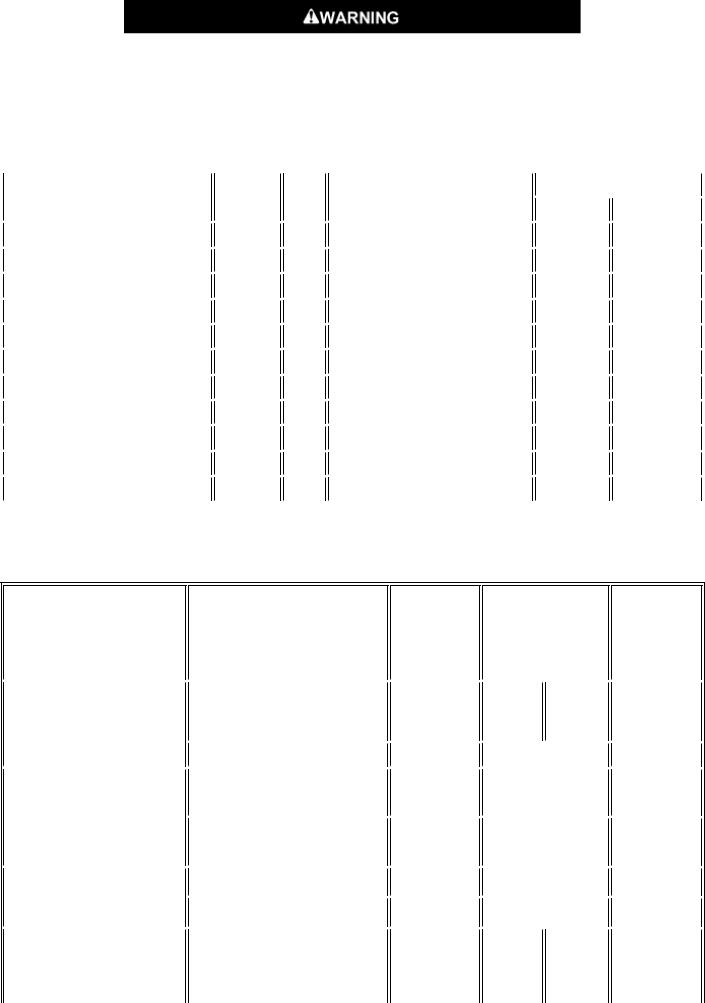
below the steering head.
Use only HarleyDavidson approved tires. See a Harley Davidson dealer. Using nonapproved tires can adversely affect stability, which could result in death or serious injury. (00024a)
Tires
|
|
|
|
|
|
|
|
|
|
|
|
|
|
|
MODEL |
|
MOUNT SIZE |
|
APPROVED TIRE |
|
PRESSURE (COLD) |
||||||
|
|
|
|
|
|
|
|
|
|
|
|
|
|
|
|
|
|
|
|
|
|
|
|
psi |
|
kPa |
|
|
|
|
|
|
|
|
|
|
|
|
|||
|
FLSTSB, FLSTC |
|
front |
|
16 in |
|
Dunlop D402F MT90B16 |
|
36 |
|
248 |
|
|
|
|
|
|
|
|
|
|
|
|
|
|||
|
FLSTN, FLSTC (whitewall) |
|
front |
|
16 in |
|
Dunlop D402F MT90B16 |
|
36 |
|
248 |
|
|
|
|
|
|
|
|
|
|
|
|
|
|||
|
FLSTF, FLSTFB |
|
front |
|
17 in |
|
Dunlop D408F 140/75R17 |
|
36 |
|
248 |
|
|
|
|
|
|
|
|
|
|
|
|
|
|||
|
FXS, FXST |
|
front |
|
21 in |
|
Dunlop D408F MH9021 |
|
30 |
|
206 |
|
|
|
|
|
|
|
|
|
|
|
|
|
|||
|
FXCWC |
|
front |
|
19 in |
|
Dunlop D408F 90/9019 |
|
30 |
|
206 |
|
|
|
|
|
|
|
|
|
|
|
|
|
|||
|
FLSTC |
|
rear |
|
16 in |
|
Dunlop D401 150/80B16 |
|
40 |
|
276 |
|
|
|
|
|
|
|
|
|
|
|
|
|
|
||
|
FLSTN, FLSTC (whitewall) |
|
rear |
|
16 in |
|
Dunlop D402 |
MU85B16 |
|
40 |
|
276 |
|
|
|
|
|
|
|
|
|
|
|
|
|||
|
FXS |
|
rear |
|
16 in |
|
Dunlop D402 MU85B16 |
|
40 |
|
276 |
|
|
|
|
|
|
|
|
|
|
|
|
|
|
||
|
FLSTF, FXST, FLSTFB |
|
rear |
|
17 in |
|
Dunlop D407 |
200/55R17 |
|
42 |
|
290 |
|
|
|
|
|
|
|
|
|
|
|
|
|
||
|
FLSTSB |
|
rear |
|
17 in |
|
Dunlop D401 |
200/55R17 |
|
42 |
|
290 |
|
|
|
|
|
|
|
|
|
|
|
|
|
||
|
FXCWC |
|
rear |
|
18 in |
|
Dunlop D407 |
240/40R18 |
|
42 |
|
290 |
|
|
|
|
|
|
|
|
|
|
|
|
|
|
|
Bulb Chart
LAMP |
|
DESCRIPTION |
|
BULBS |
|
CURRENT |
|
HARLEY |
|||
|
|
(ALL LAMPS 12 V) |
|
REQUIRED |
|
|
DRAW |
|
DAVIDSON |
||
|
|
|
|
(AMPERAGE) |
|
PART |
|||||
|
|
|
|
|
|
|
|||||
|
|
|
|
|
|
|
|
|
|
|
NUMBER |
|
|
|
|
|
|
|
|
|
|||
Headlamp |
|
High beam/low beam |
|
1 |
|
4.7 |
|
|
4.3 |
|
6832903 |
|
|
|
|
|
|
(HI) |
|
|
(LO) |
|
|
|
|
|
|
|
|
|
|
|
|||
|
|
Position lamp international |
|
1 |
|
0.32 |
|
|
|
|
5343697 |
|
|
|
|
|
|
||||||
Tail and stop lamp |
|
Tail/stop lamp |
|
1 |
|
0.59/2.10 |
|
6816704 |
|||
(all models except |
|
|
|
|
|
|
|
|
|
|
|
|
|
|
|
|
|
|
|
|
|
|
|
|
Tail/stop lamp international 1 |
0.59/2.10 |
6816704 |
||||||||
FLSTN, FXCWC and |
|
||||||||||
international FXS) |
|
|
|
|
|
|
|
|
|
|
|
|
|
|
|
|
|
|
|||||
Tail and stop lamp |
|
Tail/stop lamp |
|
1 |
|
0.59/2.10 |
|
6816889A |
|||
|
|
|
|
|
|
|
|
|
|||
|
|
|
|
|
|
||||||
(FLSTN) |
|
Tail/stop lamp international |
|
1 |
|
0.59/2.10 |
|
6816990A |
|||
|
|
|
|
|
|
|
|
||||
Turn signal lamps |
|
Front/running |
|
2 |
|
2.25 |
|
|
0.59 |
|
6816889A |
|
|
|
|
|
|
(turn |
|
|
(front |
|
|
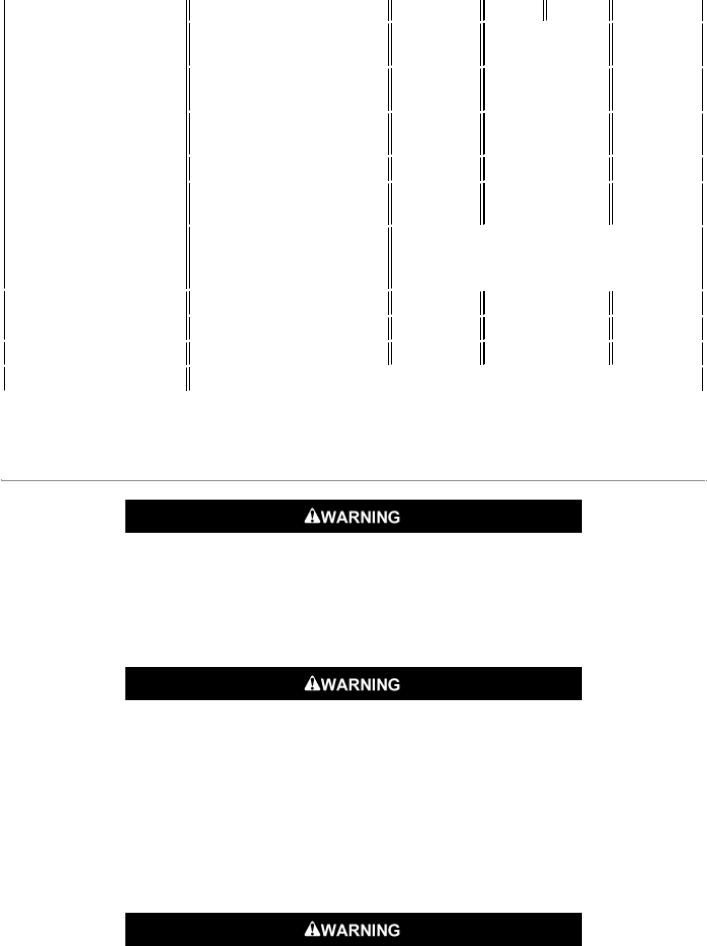
|
|
|
|
|
|
|
signals) running) |
|
|
|
|
|
|
|
|
|
|
|
|
|
|
|
|
|
Front international (except |
|
2 |
|
1.75 |
|
6816384 |
|
|
|
|
FLSTC) |
|
|
|
|
|
|
|
|
|
|
|
|
|
|
|
|||
|
|
|
Front international |
|
2 |
|
1.75 |
|
6857264B |
|
|
|
|
(FLSTC) |
|
|
|
|
|
|
|
|
|
|
|
|
|
|
|
|||
|
|
|
Rear (except FXS and |
|
2 |
|
2.25 |
|
6857264B |
|
|
|
|
FXCWC) |
|
|
|
|
|
|
|
|
|
|
|
|
|
|
|
|||
|
|
|
Rear (FXS) |
|
2 |
|
2.25 |
|
6816889A |
|
|
|
|
|
|
|
|
|
|
||
|
|
|
Rear international (except |
|
2 |
|
1.75 |
|
6816384 |
|
|
|
|
FXS and FXCWC) |
|
|
|
|
|
|
|
|
|
|
|
|
|
|||||
|
|
|
Rear turn signal/tail/stop |
|
Illuminated with LEDs. Replace entire |
|
||||
|
|
|
lamp (FXCWC and |
|
assembly upon failure. |
|
|
|||
|
|
|
international FXS) |
|
|
|
|
|
|
|
|
|
|
|
|
|
|
|
|
||
|
Auxiliary lamps |
|
FLSTC/FLSTN |
|
2 |
|
2.50 |
|
6845305 |
|
|
|
|
|
|
|
|
|
|
||
|
|
|
Fog lamp international |
|
2 |
|
2.92 |
|
6845305 |
|
|
|
|
|
|
|
|
|
|
||
|
Fender tip lamp |
|
FLSTC |
|
2 |
|
0.10 |
|
6819395 |
|
|
|
|
|
|||||||
|
Instrument panel lamps |
|
Illuminated with LEDs. Replace entire assembly upon failure. |
|
||||||
|
|
|
|
|
|
|
|
|
|
|
Tire Data
Match tires, tubes, rim seals, air valves and caps to the correct wheel rim. Contact a HarleyDavidson dealer. Mismatching can result in damage to the tire bead, allow tire slippage on the rim or cause tire failure, which could result in death or serious injury. (00023b)
Use only HarleyDavidson approved tires. See a Harley Davidson dealer. Using nonapproved tires can adversely affect stability, which could result in death or serious injury. (00024a)
See Tires for approved tires and recommended pressures.
Tubeless tires fitted with the correct size inner tubes may be used on HarleyDavidson laced (wire spoked) wheels.
Use inner tubes on laced (wire spoked) wheels. Using tubeless tires on laced wheels can cause air leaks, which could result in death or serious injury. (00025a)
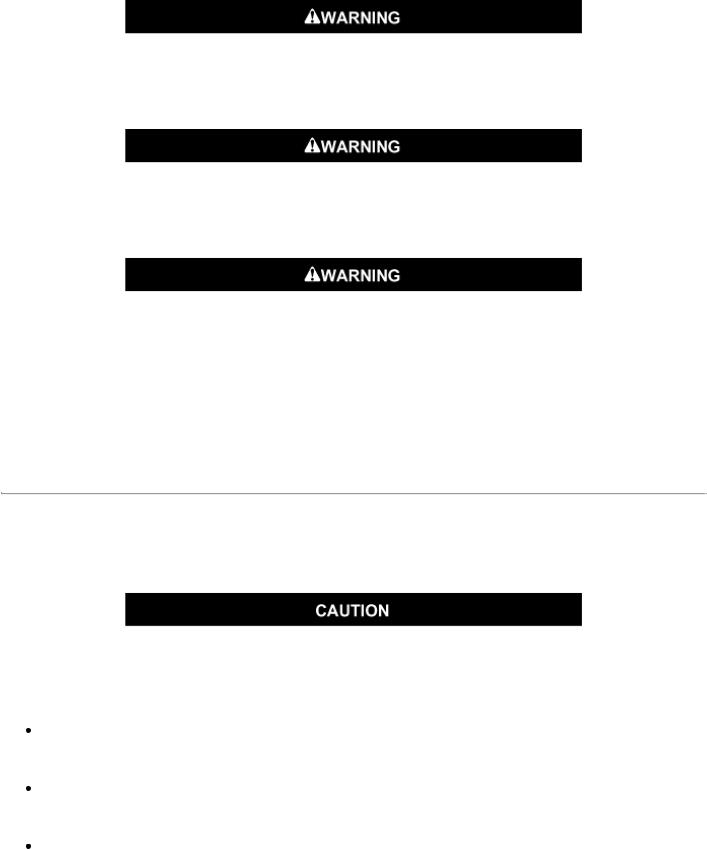
Tubeless tires are used on all HarleyDavidson cast and disc wheels.
Tire sizes are molded on the tire sidewall. Inner tube sizes are printed on the tube.
HarleyDavidson front and rear tires are not the same. Interchanging front and rear tires can cause tire failure, which could result in death or serious injury. (00026a)
Do not inflate tire beyond maximum pressure as specified on sidewall. Over inflated tires can blow out, which could result in death or serious injury. (00027a)
HarleyDavidson tires are equipped with wear bars that run horizontally across the tread. When wear bars become visible and only 1/32 in. (0.8 mm) tread depth remains, replace tire immediately. Using a worn tire can adversely affect stability and handling, which could result in death or serious injury. Use only HarleyDavidson approved replacement tires. (00090b)
Gasoline Blends
Your motorcycle was designed to get the best performance and efficiency using unleaded gasoline. Most gasoline is blended with alcohol and/or ether to create oxygenated blends. The type and amount of alcohol or ether added to the fuel is important.
Do not use gasoline that contains methanol. Doing so can result in fuel system component failure, engine damage and/or equipment malfunction. (00148a)
Gasoline containing METHYL TERTIARY BUTYL ETHER (MTBE): Gasoline/MTBE blends are a mixture of gasoline and as much as 15% MTBE. Gasoline/MTBE blends can be used in your motorcycle.
ETHANOL is a mixture of 10% ethanol (Grain alcohol) and 90% unleaded gasoline. Gasoline/ethanol blends can be used in your motorcycle if the ethanol content does not exceed 10%.
REFORMULATED OR OXYGENATED GASOLINES (RFG): Reformulated gasoline is a term used to describe gasoline blends that are specifically designed to burn cleaner than other types of gasoline, leaving fewer tailpipe emissions. They are also formulated to evaporate less when you are filling your tank. Reformulated gasolines use additives to oxygenate the gas. Your motorcycle will run normally using this type of gas and Harley Davidson recommends you use it when possible, as an aid to cleaner air in our

environment.
Do not use race gas or octane boosters. Use of these fuels will damage the fuel system.
Some gasoline blends might adversely affect the starting, driveability or fuel efficiency of the motorcycle. If any of these problems are experienced, try a different brand of gasoline or gasoline with a higher octane blend.
Fuel
Always use a good quality unleaded gasoline. Octane ratings are usually found on the pump. Refer to Octane Ratings.
Avoid spills. Slowly remove filler cap. Do not fill above bottom of filler neck insert, leaving air space for fuel expansion. Secure filler cap after refueling. Gasoline is extremely flammable and highly explosive, which could result in death or serious injury. (00028a)
Use care when refueling. Pressurized air in fuel tank can force gasoline to escape through filler tube. Gasoline is extremely flammable and highly explosive, which could result in death or serious injury. (00029a)
Modern service station pumps dispense a high flow of gasoline into a motorcycle fuel tank making air entrapment and pressurization a possibility.
Octane Ratings
SPECIFICATION
 Pump Octane (R+M)/2
Pump Octane (R+M)/2
RATING
91 (95 RON)
Catalytic Converter
The motorcycle is equipped with catalytic converters.
Do not operate catalytic converterequipped vehicle with engine misfire. If you operate the vehicle under this condition, the exhaust will become abnormally hot, which can cause vehicle damage, including emission control loss. (00149c)
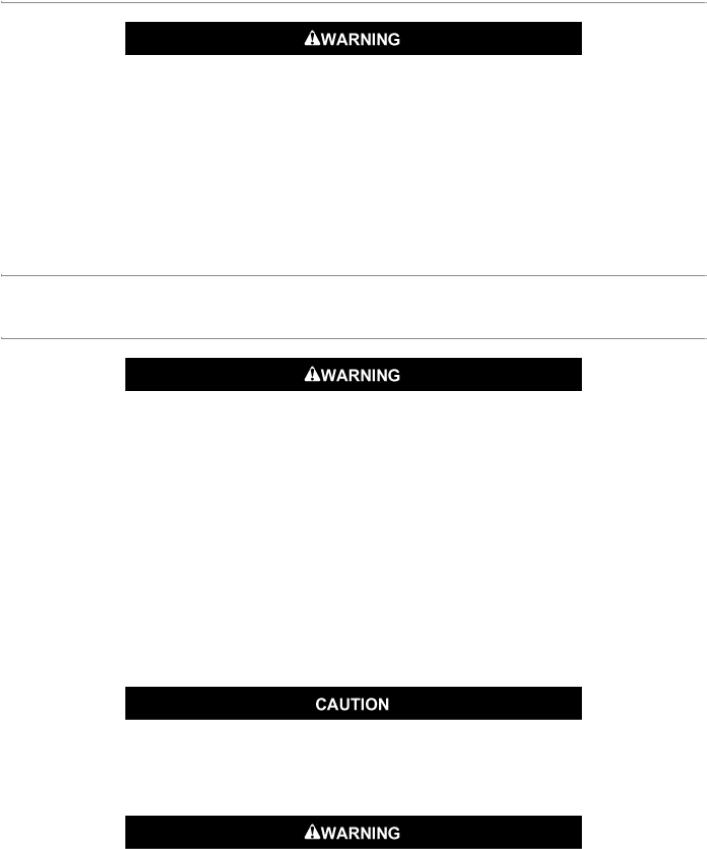
Use only unleaded fuel in catalytic converterequipped motorcycles. Using leaded fuel will damage the emission control system. (00150b)
Controls and Indicators
General: Controls and Indicators
Read the CONTROLS AND INDICATORS section before riding your motorcycle. Failure to understand the operation of the motorcycle could result in death or serious injury. (00043a)
Some features explained are unique to certain models. These features may be available as accessories for your HarleyDavidson motorcycle. See a HarleyDavidson dealer for a complete list of accessories that will fit your specific motorcycle.
Ignition Switch
General
The automaticon headlamp feature provides increased visibility of the rider to other motorists. Be sure headlamp is on at all times. Poor visibility of rider to other motorists can result in death or serious injury. (00030b)
Refer to Ignition Switch Positions: Softail Models. The ignition switch controls electrical functions of the motorcycle.
See the "YOUR OWNER'S MANUAL" section at the front of this book. Be sure to record all your key numbers in the space provided.
NOTE:
The lamps work when the switch is in the IGN position, as required by law in some localities.
Protect your vehicle against theft. Failure to lock the motorcycle after parking could result in theft and/or equipment damage. (00151b)
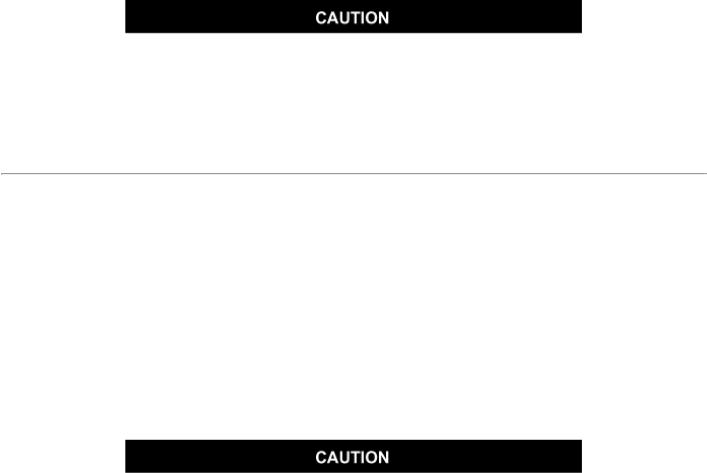
Do not operate vehicle with forks locked. Locking the forks restricts the vehicle's turning ability, which could result in death or serious injury. (00035a)
Do not lubricate barrel locks with petroleum based lubricants or graphite. Inoperative locks may result. (00152a)
All Models Except FXS/FXCWC
See Ignition Switch: Softail Models (Except FXS/FXCWC). The ignition switch is located on the instrument panel on top of the tank.
Unlock: To unlock the switch, insert key and turn clockwise to unlock position. Remove the key from ignition switch before operating motorcycle. If you do not remove key, it can fall out while riding.
Operate: Rotate switch to desired position. Refer to Ignition Switch Positions: Softail Models for ignition switch functions.
Lock: The switch can be locked in the OFF or ACC position. To lock the switch, raise the switch cover, insert key, and turn counterclockwise to LOCK position.
Turn the ignition switch to the OFF position before locking the motorcycle. Leaving the switch in the ACC position will keep the instrument lights on and result in a discharged battery. (00492b)
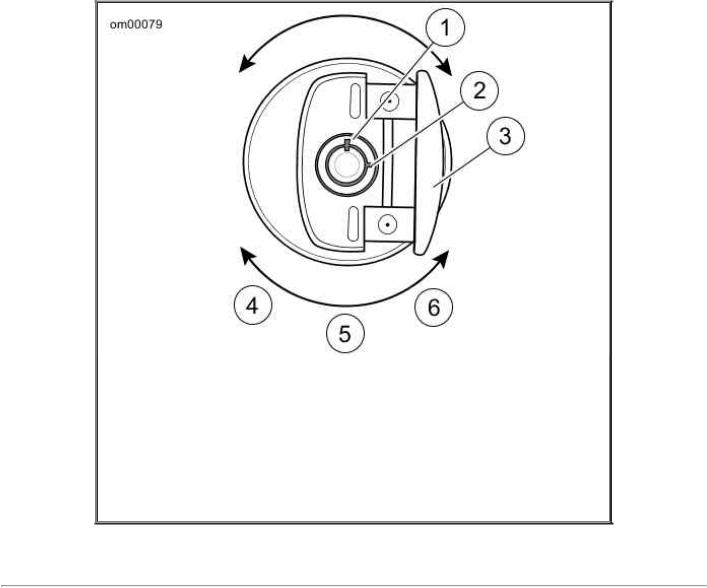
1.Lock position
2.Unlock position
3.Open switch cover
4.IGN
5.OFF (lock)
6.Accessory (lock)
Ignition Switch: Softail Models (Except
FXS/FXCWC)
FXS/FXCWC Models
See Ignition Switch: FXS/FXCWC Models. The ignition switch is located on the left side of the vehicle between the engine cylinders.
Unlock: Insert key and turn clockwise to unlock the thumb lever. Remove the key when riding. Riding with a key attached to a keychain or fob can damage the cosmetic surface of the ignition coil.
Operate: Use the thumb lever to select the ACC or IGN positions. Refer to Ignition Switch Positions: Softail Models for ignition switch functions.
Lock: Turn the thumb lever to OFF. Insert the key and turn counterclockwise to lock the thumb lever. Remove the key.
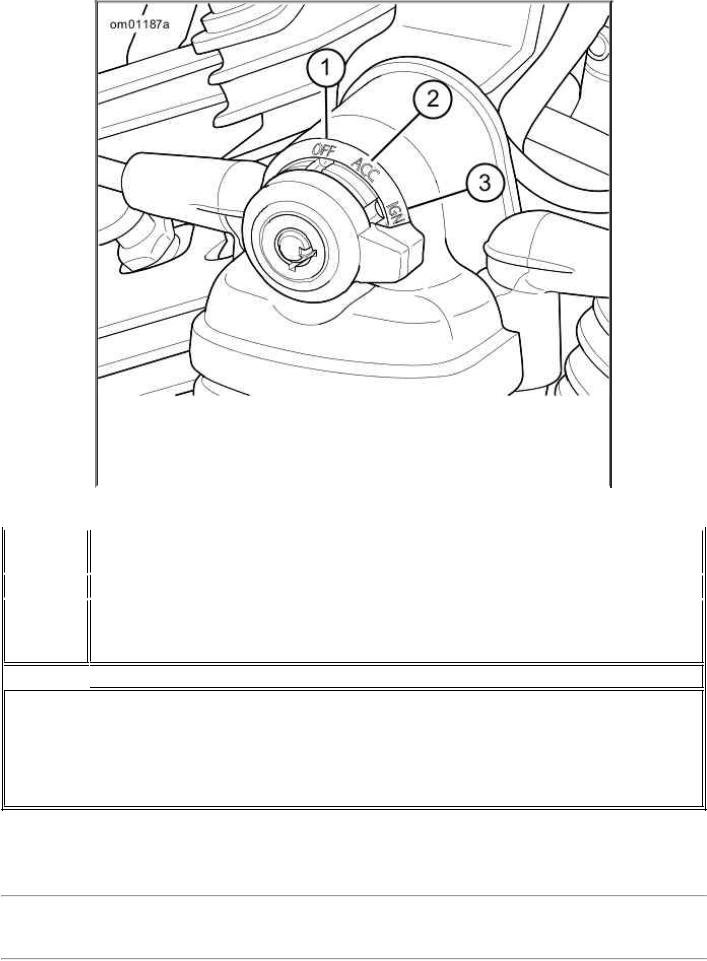
1. |
OFF |
2. |
ACC |
3. |
IGN |
|
|
|
|
Ignition Switch: FXS/FXCWC Models |
||
|
|
|
|
|
|
|
|
|
|
|
Ignition Switch Positions: Softail Models |
||
|
|
|
|
|
|
|
|
|
|
|
|
|
|
|
SWITCH |
|
|
FUNCTION |
|
|
|
POSITION |
|
|
|
|
|
|
|
|
|
|||
|
OFF |
|
Ignition, lamps and accessories are off. |
|
||
|
|
|
|
|||
|
ACC* |
|
Accessories are on. Hazard warning flashers can be operated. Instrument lamps are |
|
||
|
|
|
on. The headlamp switch can be switched between HI and LO. Brake lamp and horn |
|||
|
|
|
can be activated. |
|||
 IGNITION*
IGNITION* Ignition, lamps and accessories are on.
Ignition, lamps and accessories are on.
*International models have an additional function position lamp and tail lamp are also on.
NOTE: Leaving the motorcycle in ACC for an extended amount of time can discharge the battery. If in ACC, the motorcycle will be automatically turned OFF after two hours to prevent battery from complete discharge. To resume normal operation turn the ignition switch back to OFF and then to the desired position.
Hand Controls
Electric Starter Switch
See Handlebar Controls. The electric starter switch (5) is located on the right handlebar control group. See Starting the Engine.

1.Put the engine OFF/RUN switch (6) in the RUN position and the transmission in neutral. Neutral (green) indicator lamp should be illuminated.
2.See Ignition Switch: Softail Models (Except FXS/FXCWC). Turn the ignition switch to IGN and push the START switch to operate starter motor.
NOTES:
When the starter is activated, the headlamp will be momentarily turned off to reduce battery load.
If the engine does not start, the starter motor will operate for five seconds and then stop. Release and press the START switch. After several unsuccessful start attempts, see a HarleyDavidson dealer.
Hazard Warning 4Way Flasher
The hazard warning switch (5) is located above the electric starter switch. This system allows a stranded motorcycle to be left in the 4way flashing mode and secured until help is found.
1.With the ignition switch in the IGN or ACC position, press on the hazard warning triangle to activate the 4way flashers.
NOTE:
If equipped with the optional security system, the fob must be present when turning the 4 way flashers on and when canceling the flashers.
2.Turn the ignition to OFF. The 4way flashers will continue for two hours or until the operation is cancelled by the rider.
3.To cancel, turn the ignition to ACC or ON and press the warning triangle above the electric starter switch.
Engine OFF/RUN Switch
See Handlebar Controls. The engine OFF/RUN switch (6) turns the engine power on or off. The engine OFF/RUN switch is located on the right handlebar control. Push the top portion of the engine OFF/RUN switch to turn off engine power and shut the engine off. Push the bottom portion of the engine OFF/RUN switch to enable engine start and run.
NOTES:
The engine OFF/RUN switch must be in the RUN position to start or operate the engine. The engine OFF/RUN switch should be used to shut the engine off.
1.To shut the engine off, push the top of the OFF/RUN switch to the OFF position.
2.See Ignition Switch: Softail Models (Except FXS/FXCWC). Turn the ignition switch to the OFF position to turn the electric power completely OFF.
Throttle Control Grip
See Handlebar Controls. The throttle control grip (8) is located on the right handlebar control and is operated with the right hand.

To reduce rider fatigue on long trips, a springloaded throttle friction adjustment screw (10) is located at the bottom of the throttle grip clamp on noncruise equipped models.
1.Slowly turn throttle control grip clockwise (toward the front of the motorcycle) to close the throttle (decelerate).
2.Slowly turn throttle control grip counterclockwise (toward rear of motorcycle) to open the throttle (accelerate).
Do not tighten throttle friction adjustment screw to the point where the engine will not return to idle automatically. Overtightening can lead to loss of vehicle control, which could result in death or serious injury. (00031b)
3.Loosen the throttle friction adjustment screw so the throttle returns to the idle position when the hand is removed from the grip.
4.Screw the throttle adjustment screw in to increase friction on the grip. This provides a damping effect on throttle motion.
NOTE:
The throttle friction adjustment screw should not be used under normal stop and go operating conditions.
Clutch Hand Lever
Do not position fingers between hand control lever and handlebar grip. Improper hand positioning can impair control lever operation and cause loss of vehicle control, which could result in death or serious injury. (00032a)
See Handlebar Controls. The clutch hand lever (1) is located on the left handlebar and is operated with the fingers of the left hand.
1.Slowly pull clutch hand lever in against handlebar grip to fully disengage clutch.
2.Shift to first gear using the gear shifter lever. See Gear Shift Lever.
3.Slowly release the clutch hand lever to engage clutch.
A clutch switch is incorporated into the left handlebar switch assembly. It enables the rider to start the vehicle in any gear (or in neutral) as long as the clutch lever is pulled in. If the clutch is not disengaged and the vehicle is in gear, the vehicle will not start.
HORN/TRIP Switch
HORN: See Handlebar Controls. The horn is operated by pressing on the HORN switch (2)
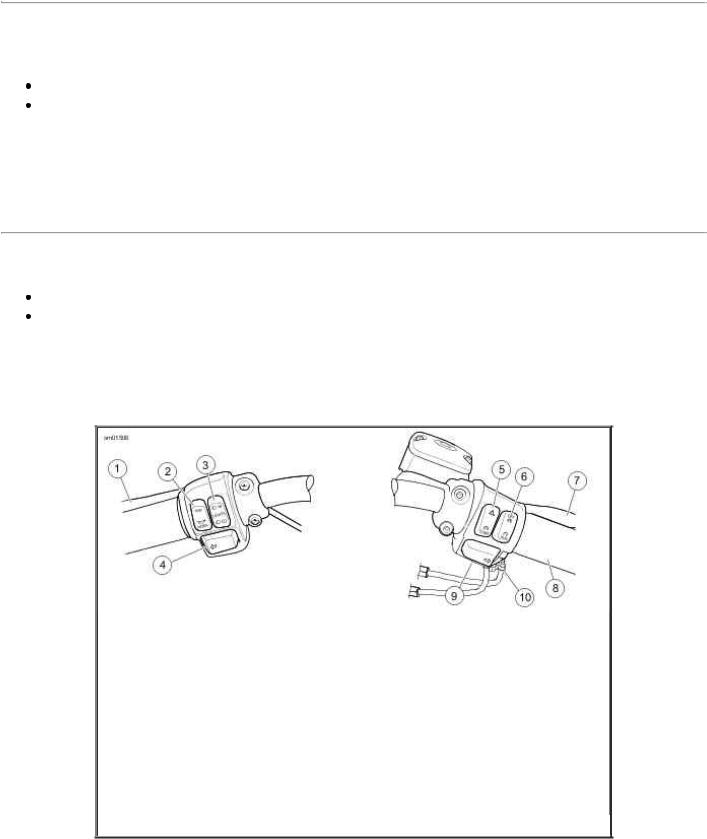
located on the left handlebar control. The horn can be activated for up to 10 seconds at a time. If the Horn Button is held for a longer period, the horn will automatically deactivate.
TRIP: The TRIP switch activates the trip odometers and is used to activate the odometer display to scroll through different screens of the display and to enter diagnostics mode to retrieve Diagnostic Trouble Codes (DTCs). With the ignition switch in OFF, the trip switch can activate time or odometer displays.
Headlamp Dimmer Switch
See Handlebar Controls. The headlamp dimmer switch (3) is located on the left handlebar. The switch has two positions to activate the headlamps high or low beams.
Press the top of the headlamp dimmer beam switch to activate the high beam. Press the bottom of the headlamp dimmer switch to return to the low beam.
See Indicator Lamps (Typical). The (blue) high beam indicator lamp will illuminate when the high beam is on.
Turn Signal Switches
See Handlebar Controls. Each handlebar control group contains a turn signal switch.
The right turn signal switch (11) operates the right front and right rear flashing lamps. The left turn signal switch (4) operates the left front and left rear flashing lamps.
NOTE:
Front turn signal lamps also function as running lamps. Due to local regulations, this feature may not be available in all locations.
1.Clutch hand lever
2.Horn/trip switch
3.Headlamp dimmer switch
4.Left turn signal switch
5.Electric starter/hazard warning switch
6.Engine off/run switch
7.Brake hand lever
8.Throttle control grip
9.Right turn signal switch
10.Friction adjustment screw
Handlebar Controls
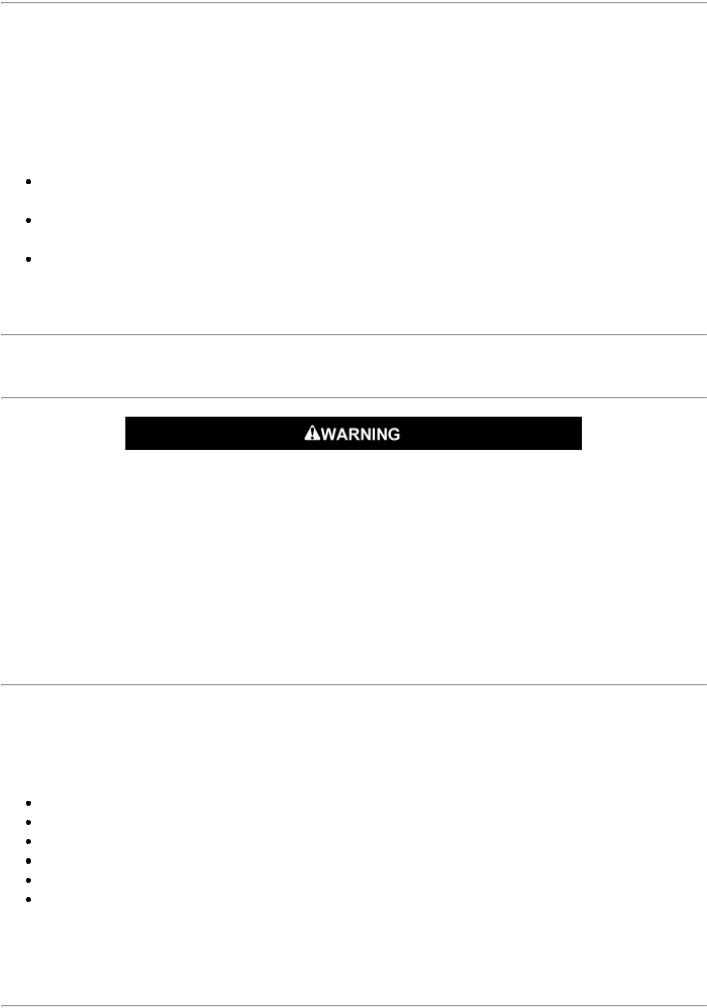
Turn Signal Switch Operation
The turn signal switches are used by the turn signal module to control turn signal operation based on vehicle speed, vehicle acceleration and turn completion.
Momentarily press the desired turn signal switch. The turn signal lamps will begin and continue flashing until they are manually or automatically cancelled. As long as the motorcycle is stationary, the signals will flash.
NOTES:
If you are signaling to turn in one direction and you press the switch for the opposite turn signal, the first signal is cancelled and the opposite side begins flashing.
If you want to stop the lamps from flashing, briefly press the turn signal switch a second time. The turn signal lamps will stop flashing.
If a turn signal indicator is flashing at a high rate, a turn signal bulb is not operating. Exercise caution and use hand signals. Replace defective bulbs immediately.
Instruments
Speedometer
Travel at speeds appropriate for road and conditions and never travel faster than posted speed limit. Excessive speed can cause loss of vehicle control, which could result in death or serious injury. (00008a)
See Speedometer/Odometer/Tachometer (Typical) and Instruments: FLSTSB. The speedometer registers miles per hour (U.S. models only) or kilometers per hour (international models only).
Odometer
Pressing the TRIP switch with the ignition switch in any position will activate the odometer reading.
The odometer window in the speedometer face also provides the following selectable displays:
Odometer
Trip odometer A
Trip odometer B
Fuel range
Time
Gear number and tachometer
Press and release the TRIP switch to cycle through the displays.
Trip Odometers A and B

To check mileage or to reset trip odometers, the ignition switch must be in the ACC or IGN position. Press and release the TRIP switch until the desired trip odometer register (A or B) is displayed. An A or B in the upper left of the display window identifies the trip odometer.
To reset or zero trip odometers, have desired (A or B) odometer in display window. Press the TRIP switch and hold for approximately three seconds. The trip odometer will be reset to zero.
Gear Selection
Press and release the TRIP switch to cycle through the odometer window displays to the gear number and the tachometer display. The gear number will read 16.
In neutral or with the clutch lever pulled in, the gear number in the display will be blank.
Tachometer
Press and release the TRIP switch to cycle through the odometer window displays to the gear number and the tachometer display. The tachometer will read in rpms.
Time
Press and release the TRIP switch to cycle through the odometer window displays to the time display. To set the time:
1.Turn the ignition switch to ACC or IGN.
2.See Speedometer/Odometer/Tachometer (Typical) and Instruments: FLSTSB. Press and release the TRIP switch until time (hour and minutes) is displayed. Press and hold the TRIP switch until 12HR begins to blink in the speedometer display window. Release the switch.
3.Press and release the TRIP switch once to advance to a blinking 24HR or military style time display. Each time you press and release the switch, the display will switch between 12HR and 24HR.
4.When the desired time style is displayed, press and hold the TRIP switch for until the hours display is blinking.
5.Press and release the TRIP switch repeatedly to advance the hours.
6.When the correct hour is displayed, press and hold the TRIP switch until the minutes display starts blinking.
7.Press and release the TRIP switch repeatedly to advance the minutes display.
8.When the correct minutes are displayed, press and hold the TRIP switch until the display advances to the selection of AM or PM.
NOTE:
AM or PM will not appear in the regular time display. The motorcycle uses the selection for diagnostic purposes.

9.In the 12HR display, AM or PM will appear flashing. Select AM or PM with the TRIP switch and press and hold the switch for five seconds.
10.Turn the ignition switch OFF.
Fuel Range
The fuel range display shows the approximate mileage available with the amount of fuel left in the fuel tank.
With the ignition switch in the ACC or IGN position, press the TRIP switch until fuel range is displayed, as indicated by the letter "R" in the left side of the display. The calculated remaining distance (miles or kilometers) to empty is displayed, based on the amount of fuel in tank. Range can be accessed at any time using the TRIP switch.
Low Fuel Warning
When the low fuel warning lamp illuminates, the fuel range feature will automatically be displayed in the odometer window. The rider can press the TRIP switch to return to the cycle of odometer displays. The fuel range warning will not be repeated until the ignition switch is cycled off and back on.
After the fuel range drops to 10 mi 16 km remaining, the fuel range display will scroll "LO RNG" to indicate that the motorcycle will shortly run out of fuel.
Resetting the low fuel warning lamp and range requires an ignition cycle change. Always turn the ignition switch to OFF when fueling.
Disable: To disable this function while riding, press and hold the TRIP switch while in the fuel range display mode. Automatic range popup feature will show that it is disabled by blinking twice.
Enable: To enable the automatic low fuel warning range display, press and hold the TRIP switch. The low fuel range will blink once when the automatic feature is enabled.
NOTE:
When the low fuel warning lamp turns on, the fuel level is low. Refuel as soon as possible. The range display is only updated when the vehicle is moving.
The automatic fuel range display is enabled after the ignition is turned OFFIGN.
Tip Indicator
If tip occurs, check all controls for proper operation. Restricted control movement can adversely affect the performance of the brakes, clutch or ability to shift, which could result in loss of vehicle control and death or serious injury. (00350a)
Should motorcycle be tipped over, the word "tIP" will appear in the odometer window. The engine will not start until reset.
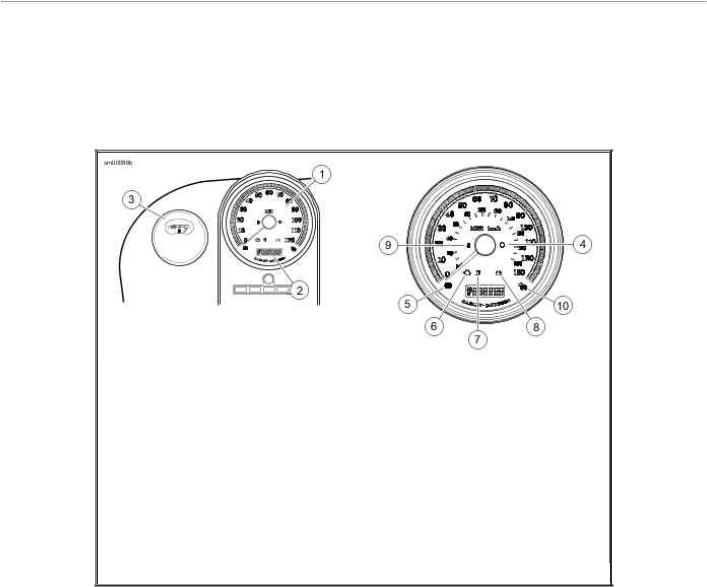
Reset: To reset, set the motorcycle upright and turn the ignition switch OFFIGN.
No Fob Message
If the motorcycle is equipped with a security system and is driven off leaving the fob behind, 'NO FOB' will be displayed in the odometer window as soon as the motorcycle starts moving. The display will last for 10 seconds as a reminder to retrieve the fob.
With the motorcycle separated from its assigned fob, the motorcycle can only be started with a manual PIN entry to disarm the security system. See Arming and Disarming.
1.Speedometer
2.Odometer/tachometer
3.Fuel gauge
4.Electrical system lamp (security system)
5.ABS lamp
6.Check engine lamp
7.Low fuel warning lamp
8.Battery lamp
9.Sixth gear indicator
10.Cruise enabled lamp (not used)
Speedometer/Odometer/Tachometer (Typical)
